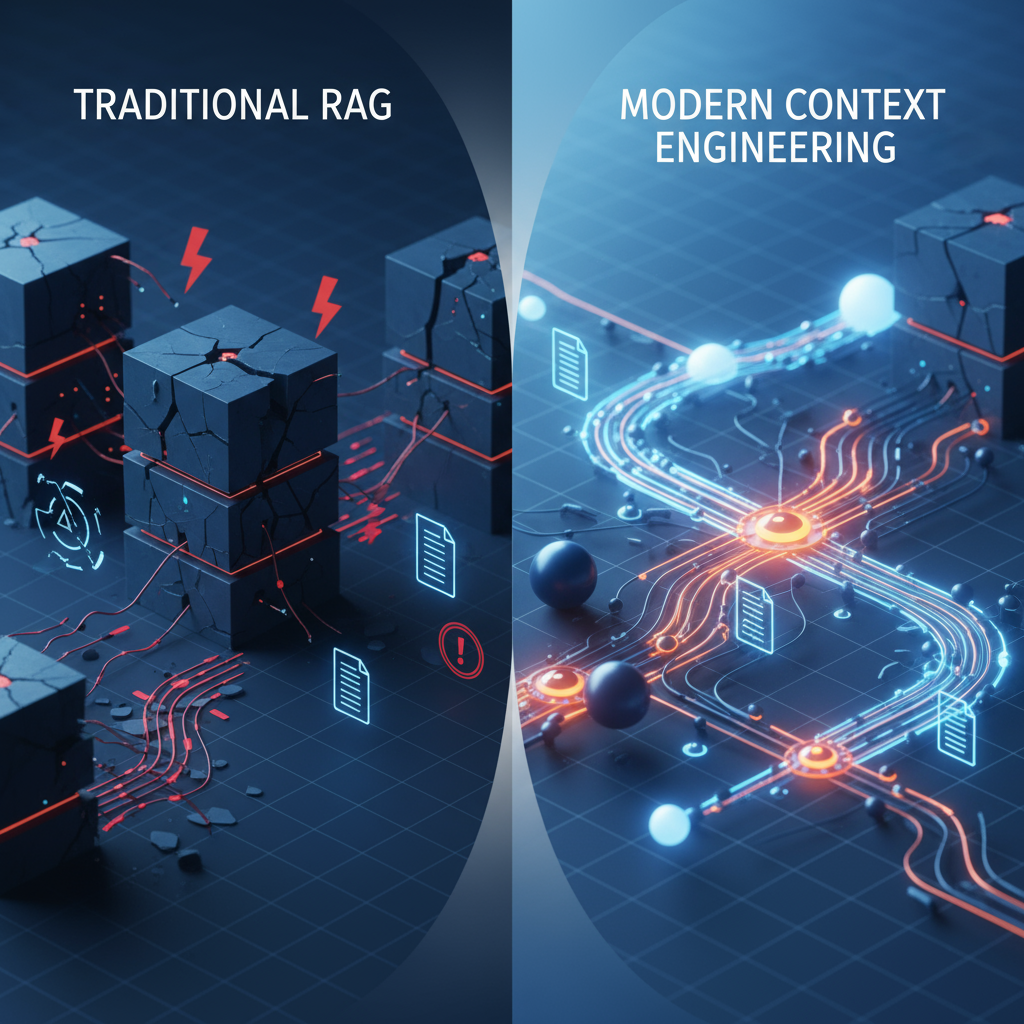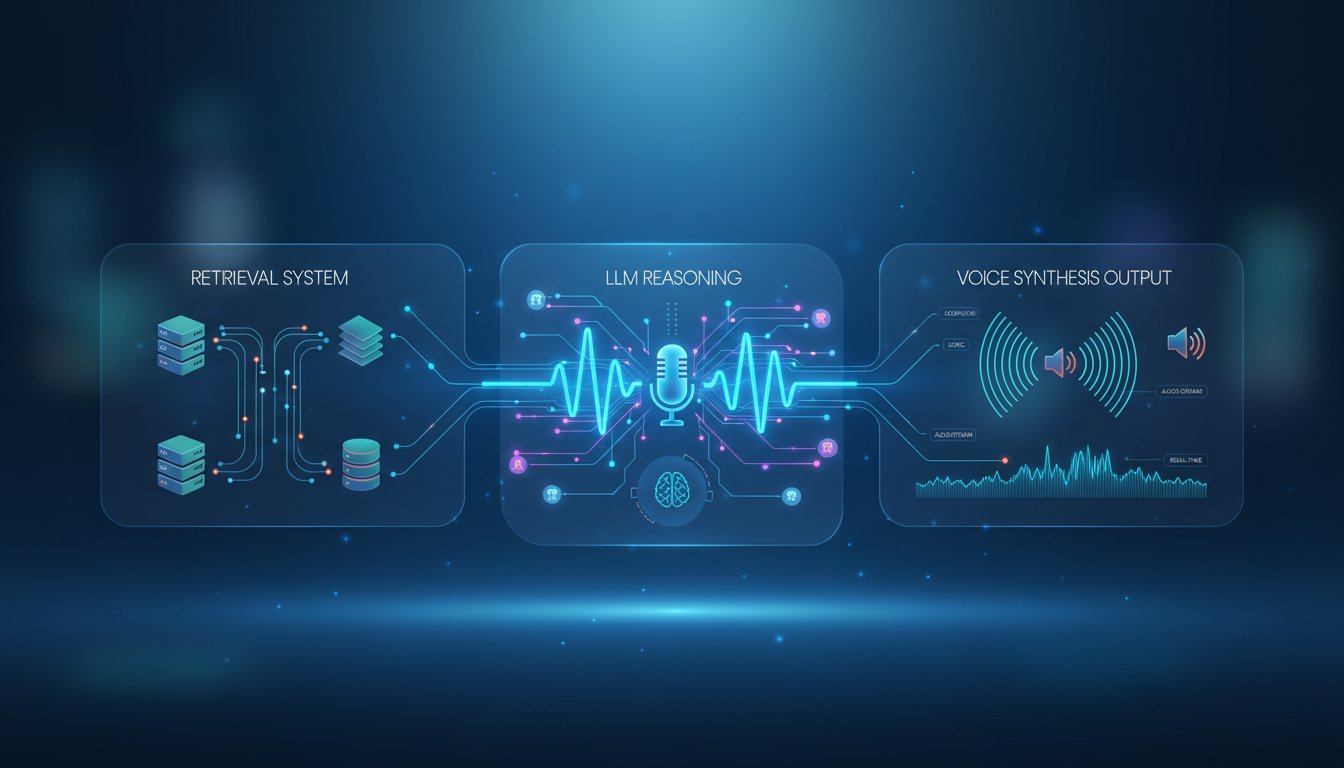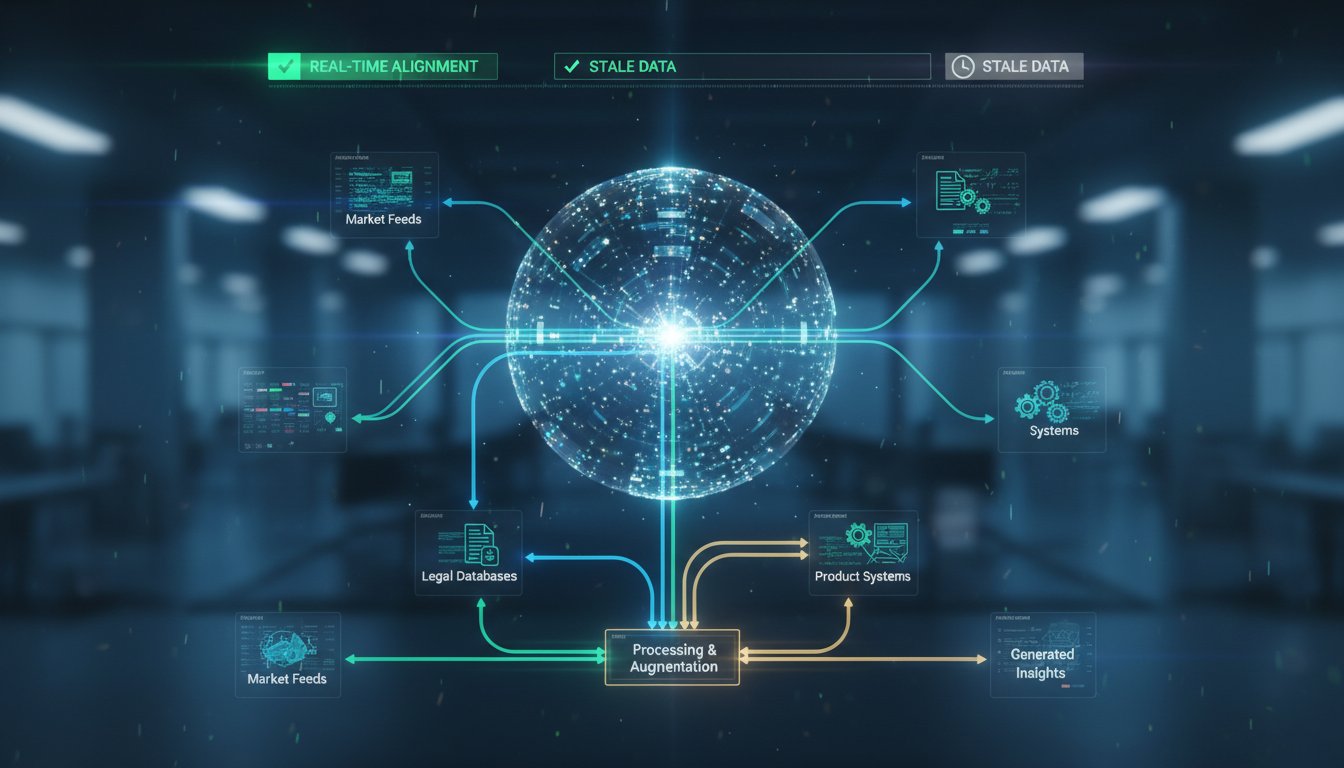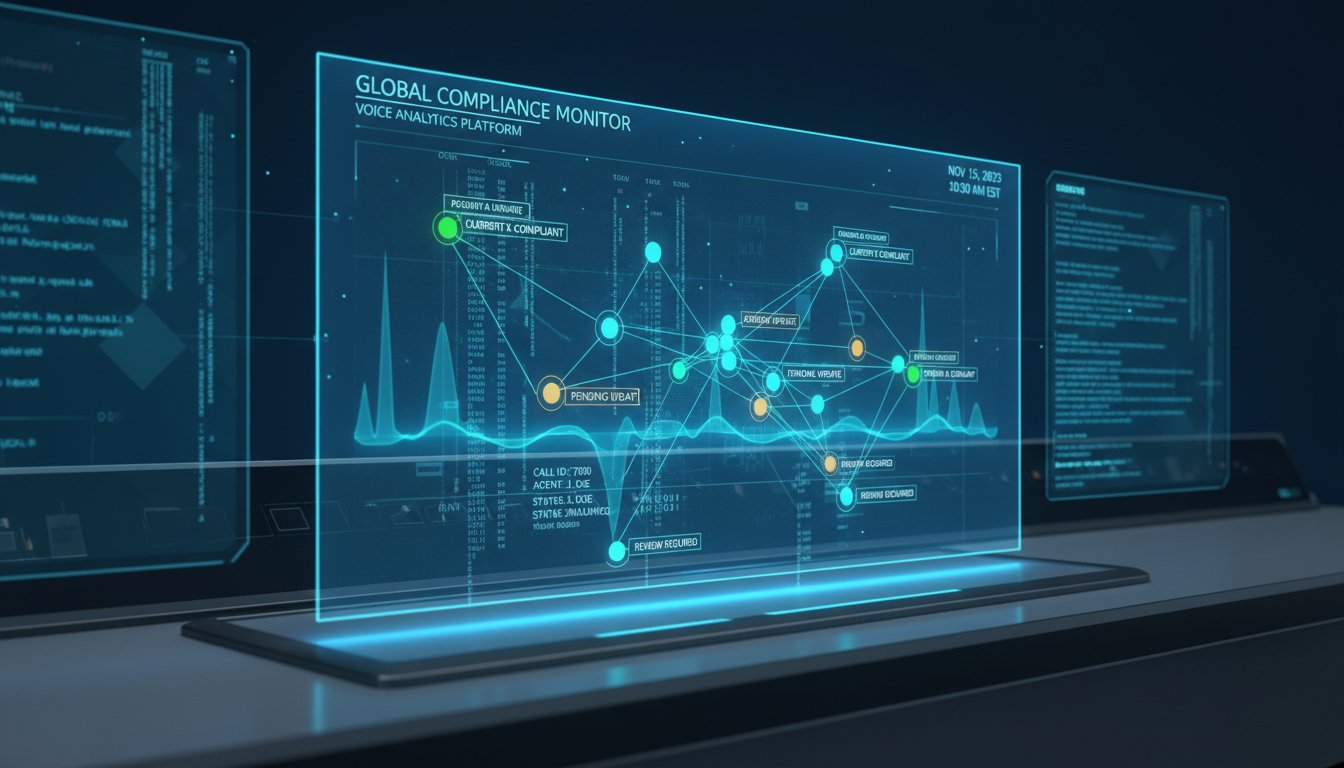Enterprise AI implementations are failing at an alarming rate. According to S&P Global Market Intelligence, 42% of companies abandoned most AI initiatives in 2025 — up from just 17% in 2024. The culprit? Traditional RAG systems that can’t handle the complexity of enterprise data and workflows.
But there’s a new approach emerging that’s changing everything: context engineering. This isn’t just another buzzword or incremental improvement. It’s a fundamental shift in how we think about enterprise AI systems that’s showing remarkable results. Microsoft recently reported $500 million in AI-driven cost savings using advanced context-aware systems, while companies implementing proper context engineering frameworks are seeing 80% fewer project failures.
In this comprehensive guide, we’ll explore how context engineering is revolutionizing enterprise RAG implementations, why traditional approaches are falling short, and most importantly, how you can implement this framework in your organization. Whether you’re dealing with unstructured enterprise data, struggling with RAG system performance, or looking to build truly production-ready AI solutions, this guide will provide the technical foundation you need.
The Fatal Flaws of Traditional RAG Systems
Traditional RAG systems operate on a deceptively simple premise: retrieve relevant documents, stuff them into a prompt, and let the language model generate answers. This approach works well for simple use cases with clean, structured data. But enterprise environments tell a different story.
The Context Collapse Problem
Most enterprise RAG systems suffer from what AI research expert Douwe Kiela calls “context collapse” — the inability to maintain coherent understanding across multiple documents, data sources, and conversation turns. Traditional RAG treats each query as an isolated event, ignoring the rich contextual relationships that exist in enterprise data.
Consider a typical enterprise scenario: An employee asks about the company’s Q3 performance. A traditional RAG system might retrieve financial documents, quarterly reports, and meeting notes. But it lacks the contextual understanding to know that “Q3 performance” should also consider the strategic initiatives launched in Q2, the market conditions discussed in leadership meetings, and the departmental OKRs that influenced those results.
The Semantic Gap
Enterprise data is messy, inconsistent, and often lacks the semantic structure needed for effective retrieval. According to RAND Corporation research, the average enterprise scraps 46% of AI proof-of-concepts before reaching production — primarily due to data quality and semantic understanding issues.
Traditional RAG systems rely heavily on keyword matching and basic semantic similarity. They struggle with:
- Domain-specific terminology that varies across departments
- Implicit relationships between documents and data points
- Temporal context that affects how information should be interpreted
- Policy and compliance constraints that should guide retrieval and generation
The Scale Challenge
Gartner predicts that over 40% of agentic AI projects will be canceled by end of 2027 due to escalating costs and unclear business value. Much of this stems from traditional RAG systems that don’t scale efficiently.
As enterprise data volumes grow, traditional RAG systems experience:
- Exponential retrieval costs as vector databases grow larger
- Degraded performance due to increased noise in retrieved context
- Maintenance complexity that requires constant retuning and optimization
- Integration challenges across multiple enterprise systems
Context Engineering: A New Paradigm
Context engineering represents a fundamental shift from reactive retrieval to proactive context construction. Instead of simply retrieving documents based on query similarity, context engineering systems build rich, semantic understanding of enterprise data and construct contextually appropriate responses.
The Four Pillars of Context Engineering
Effective context engineering rests on four core principles that address the limitations of traditional RAG:
1. Semantic Grounding
Context engineering systems establish semantic grounding through knowledge graphs and ontologies that capture the relationships between entities, concepts, and processes within your enterprise. This goes beyond simple vector embeddings to create structured understanding of how information relates across your organization.
2. Policy Integration
Unlike traditional RAG systems that treat compliance as an afterthought, context engineering integrates policy and governance directly into the retrieval and generation process. This ensures that AI responses not only answer questions accurately but do so within the appropriate compliance and security frameworks.
3. Dynamic Context Construction
Rather than static document retrieval, context engineering systems dynamically construct context based on user intent, role, historical interactions, and current business state. This creates personalized, relevant responses that consider the full enterprise context.
4. Continuous Learning
Context engineering systems learn and adapt from user interactions, feedback, and changing business conditions. This creates a feedback loop that continuously improves context construction and response quality.
How Context Engineering Works in Practice
Let’s examine how a context engineering system would handle the Q3 performance query we discussed earlier:
Step 1: Intent Analysis and Role Context
The system first analyzes the user’s role, department, and current projects to understand the intent behind the query. A CFO asking about Q3 performance needs different context than a sales manager or product owner.
Step 2: Semantic Context Construction
Using enterprise knowledge graphs, the system identifies all entities and relationships relevant to Q3 performance for this specific user. This might include financial metrics, strategic initiatives, market conditions, competitive analysis, and departmental performance indicators.
Step 3: Policy-Aware Retrieval
The system retrieves information while respecting access controls, compliance requirements, and data sensitivity levels. Financial data might be filtered based on the user’s clearance level, while ensuring all retrieved information complies with relevant regulations.
Step 4: Contextual Response Generation
Finally, the system generates a response that not only answers the question but provides the appropriate level of detail, highlights relevant trends and anomalies, and suggests follow-up actions based on the user’s role and responsibilities.
Building Your Context Engineering Framework
Implementing context engineering in your enterprise requires a systematic approach that goes beyond simply replacing your existing RAG system. Here’s a comprehensive framework for building production-ready context engineering systems.
Phase 1: Semantic Foundation
The foundation of any context engineering system is a robust semantic layer that captures the structure and relationships within your enterprise data.
Knowledge Graph Construction
Start by identifying the core entities and relationships in your enterprise:
- Business entities: Products, customers, projects, departments, processes
- Temporal relationships: Project timelines, product lifecycles, financial periods
- Hierarchical structures: Organizational charts, product taxonomies, process flows
- Causal relationships: Dependencies, requirements, impact chains
Recent acquisitions like Samsung’s purchase of Oxford Semantic Technologies and ServiceNow’s acquisition of data.world highlight the importance of semantic technologies in enterprise AI. These companies recognize that semantic understanding is crucial for building AI systems that truly understand business context.
Ontology Development
Develop domain-specific ontologies that capture the concepts, relationships, and rules governing your enterprise data. This includes:
Enterprise Ontology Example:
├── Business Processes
│ ├── Sales Pipeline
│ ├── Product Development
│ └── Customer Support
├── Organizational Structure
│ ├── Departments
│ ├── Roles
│ └── Reporting Relationships
├── Data Assets
│ ├── Financial Data
│ ├── Customer Data
│ └── Operational Data
└── Governance Framework
├── Access Controls
├── Compliance Requirements
└── Data Quality Rules
Semantic Enrichment Pipeline
Implement automated processes to enrich your existing data with semantic annotations:
- Named entity recognition for business entities
- Relationship extraction for implicit connections
- Concept mapping to enterprise ontologies
- Temporal annotation for time-sensitive information
Phase 2: Policy and Governance Integration
Context engineering systems must integrate governance and compliance directly into their architecture, not as an afterthought.
Role-Based Context Filtering
Implement fine-grained access controls that filter context based on user roles, clearance levels, and need-to-know principles:
class ContextFilter:
def __init__(self, user_profile, governance_rules):
self.user_profile = user_profile
self.governance_rules = governance_rules
def filter_context(self, retrieved_documents):
filtered_docs = []
for doc in retrieved_documents:
if self.has_access(doc):
filtered_docs.append(
self.apply_redaction(doc)
)
return filtered_docs
def has_access(self, document):
return self.governance_rules.check_access(
self.user_profile,
document.classification
)
Compliance-Aware Response Generation
Ensure that generated responses comply with relevant regulations and internal policies:
- Data retention policies that limit access to outdated information
- Privacy regulations that restrict personal data exposure
- Industry compliance requirements (SOX, HIPAA, GDPR)
- Internal policies for sensitive business information
Phase 3: Dynamic Context Construction
The core innovation of context engineering lies in its ability to dynamically construct appropriate context rather than relying on static retrieval patterns.
Multi-Dimensional Context Vectors
Move beyond simple semantic similarity to multi-dimensional context vectors that capture:
- Semantic relevance: Traditional vector similarity
- Temporal relevance: Recency and time-sensitivity
- Role relevance: User-specific importance scores
- Business relevance: Strategic priority and impact
- Relationship strength: Connection density in knowledge graph
Adaptive Context Windows
Implement context windows that adapt based on query complexity and user needs:
class AdaptiveContextWindow:
def __init__(self, base_window_size=4000):
self.base_window_size = base_window_size
def calculate_window_size(self, query_complexity, user_expertise):
complexity_multiplier = min(query_complexity / 10, 2.0)
expertise_factor = 0.8 if user_expertise == 'expert' else 1.2
return int(
self.base_window_size *
complexity_multiplier *
expertise_factor
)
def construct_context(self, query, user_profile):
window_size = self.calculate_window_size(
query.complexity_score,
user_profile.expertise_level
)
return self.retrieve_and_rank(
query,
max_tokens=window_size
)
Contextual Relationship Mapping
Map relationships between retrieved documents to provide coherent, connected context:
- Causal chains: How events and decisions led to current state
- Dependency graphs: What information depends on other information
- Temporal sequences: How situations evolved over time
- Impact networks: What entities are affected by changes
Phase 4: Continuous Learning and Adaptation
Context engineering systems must learn and adapt from user interactions to continuously improve context construction quality.
Feedback Integration
Implement feedback mechanisms that capture both explicit and implicit user preferences:
- Explicit feedback: User ratings and corrections
- Implicit feedback: Click-through rates, time spent reading
- Behavioral patterns: Common follow-up questions
- Success metrics: Task completion rates
Context Quality Metrics
Develop metrics that measure context quality beyond traditional RAG metrics:
class ContextQualityMetrics:
def __init__(self):
self.metrics = {
'semantic_coherence': 0.0,
'temporal_relevance': 0.0,
'policy_compliance': 0.0,
'user_satisfaction': 0.0,
'task_completion': 0.0
}
def calculate_coherence(self, context_documents):
# Measure semantic consistency across documents
coherence_scores = []
for i, doc1 in enumerate(context_documents):
for doc2 in context_documents[i+1:]:
coherence_scores.append(
self.semantic_similarity(doc1, doc2)
)
return np.mean(coherence_scores)
def evaluate_context_quality(self, context, user_feedback):
self.metrics['semantic_coherence'] = self.calculate_coherence(
context.documents
)
self.metrics['user_satisfaction'] = user_feedback.rating
return self.metrics
Adaptive Learning Loops
Implement learning loops that continuously refine context construction strategies:
- Query pattern analysis to identify common information needs
- Context effectiveness tracking to optimize retrieval strategies
- User behavior modeling to personalize context construction
- Performance optimization to balance quality and efficiency
Real-World Implementation Strategies
Successful context engineering implementations require careful planning and phased rollouts. Here are proven strategies for enterprise deployment.
Start with High-Value Use Cases
Begin your context engineering implementation with use cases that have clear business value and manageable complexity:
Customer Support Enhancement
Implement context engineering for customer support systems where agents need comprehensive customer history, product information, and policy guidance. The bounded domain makes it easier to implement semantic grounding while providing clear ROI through reduced resolution times.
Executive Decision Support
Build context engineering systems for executive dashboards and decision support where leaders need comprehensive, role-appropriate information synthesis. The high-stakes nature justifies the implementation investment while providing clear success metrics.
Compliance and Risk Management
Implement context engineering for compliance monitoring and risk assessment where policy integration and governance are critical requirements. This use case naturally aligns with context engineering principles while addressing regulatory requirements.
Technology Stack Considerations
Choose technologies that support the semantic richness required for context engineering:
Graph Databases
Implement graph databases like Neo4j or Amazon Neptune for knowledge graph storage and traversal. Traditional vector databases lack the relationship modeling capabilities needed for context engineering.
Semantic Layer Platforms
Consider platforms like MariaDB’s new Enterprise Platform 2026, which provides native vector search with semantic layer support, or build custom semantic layers using frameworks like Apache Jena or RDFLib.
Orchestration Frameworks
Use orchestration frameworks like LangGraph or custom workflow engines that can handle the complex decision trees required for dynamic context construction.
Integration Patterns
Plan integration patterns that minimize disruption to existing systems:
API-First Architecture
Build context engineering systems as microservices with clean APIs that can integrate with existing enterprise applications without requiring major architectural changes.
Gradual Migration Strategy
Implement context engineering alongside existing RAG systems, gradually migrating use cases as confidence and capabilities grow.
Hybrid Approaches
Consider hybrid approaches where traditional RAG handles simple queries while context engineering handles complex, multi-faceted requests.
Measuring Success and ROI
Context engineering implementations require new metrics that capture the full value of semantic understanding and dynamic context construction.
Business Impact Metrics
Track metrics that directly tie to business outcomes:
- Decision Quality: Accuracy and speed of business decisions
- Process Efficiency: Reduction in time-to-information
- Compliance Adherence: Reduction in policy violations
- User Productivity: Time saved per knowledge worker
- Knowledge Retention: Reduction in repeated questions
Technical Performance Metrics
Monitor technical metrics that ensure system reliability and efficiency:
- Context Relevance Score: Multi-dimensional relevance assessment
- Response Coherence: Semantic consistency across context
- Retrieval Precision: Accuracy of context selection
- System Latency: End-to-end response times
- Scalability Metrics: Performance under increasing load
User Experience Metrics
Capture metrics that reflect user satisfaction and adoption:
- Task Completion Rate: Percentage of successful query resolutions
- User Satisfaction Scores: Explicit feedback ratings
- Adoption Velocity: Speed of user onboarding and feature adoption
- Follow-up Query Rate: Reduction in clarifying questions
- Expert Consultation Reduction: Decreased need for human experts
Context engineering represents the next evolution in enterprise AI systems. As traditional RAG approaches reach their limitations, organizations that embrace semantic understanding, policy integration, and dynamic context construction will gain significant competitive advantages. The investment in building proper context engineering frameworks pays dividends through improved decision-making, enhanced compliance, and dramatically reduced AI project failure rates.
The transition won’t happen overnight, but the companies implementing context engineering today are positioning themselves for the agentic AI future that Gartner predicts will define the next decade of enterprise technology. With 33% of enterprise software applications expected to include agentic AI by 2028, context engineering isn’t just an optimization — it’s a strategic imperative.
Ready to move beyond traditional RAG limitations? Start by assessing your current data semantic structure and identifying high-value use cases where context engineering can deliver immediate business impact. The future of enterprise AI belongs to systems that truly understand context, and that future starts with the frameworks you build today.




